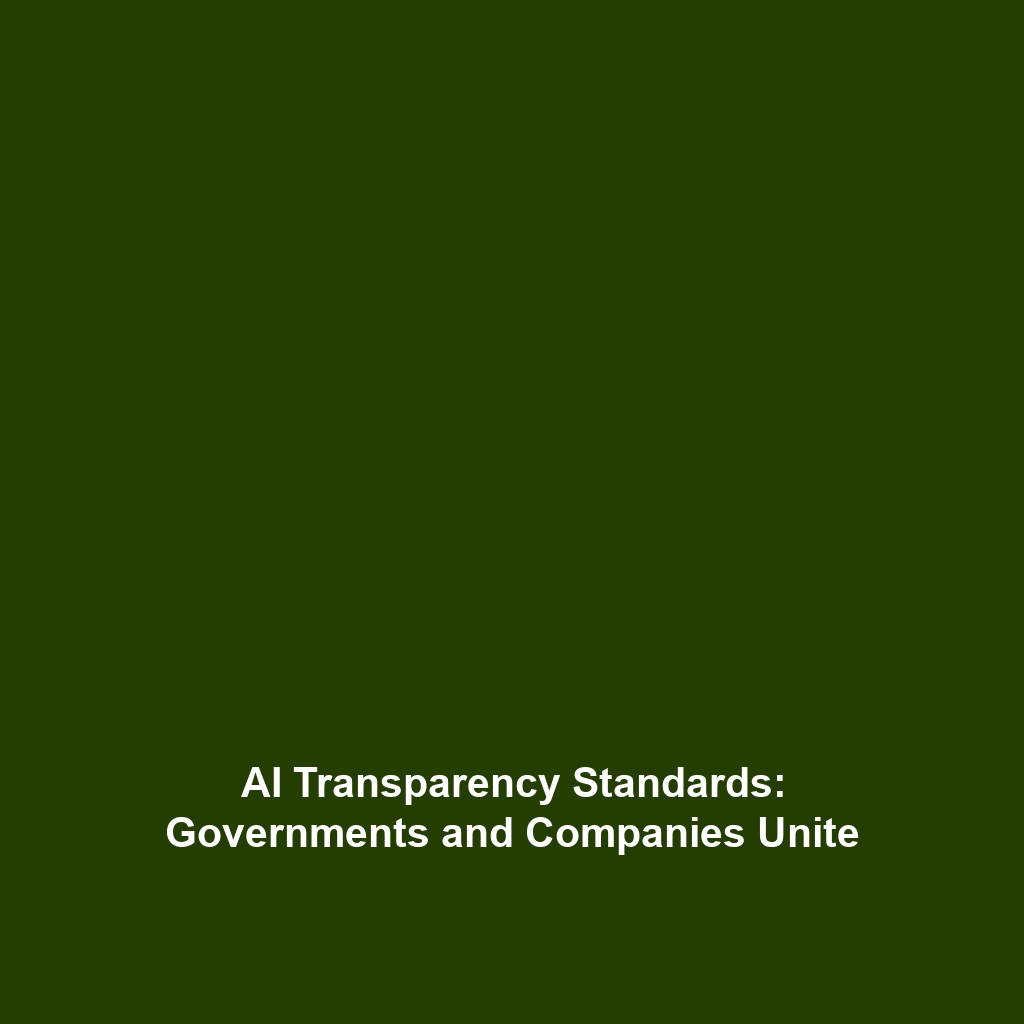Who is Accountable for AI Decisions?: The Challenge of Responsibility in Autonomous Systems
As the landscape of technology evolves, the question of accountability for AI decisions becomes increasingly significant within
the broader context of AI Ethics. Autonomous systems are designed to make choices that can impact our lives, raising crucial
queries about attribution of responsibility. Understanding who holds responsibility in these scenarios is essential for shaping
ethical guidelines and ensuring public trust in AI-driven technologies.
Key Concepts in AI Ethics
The study of accountability in AI decisions intersects with several critical concepts within the realm of AI Ethics.
These include:
- Autonomy: The ability of systems to operate independently and make decisions without human intervention.
- Transparency: The degree to which the processes of AI systems are understandable to users and stakeholders.
- Responsibility: The obligation of individuals or organizations to account for the outcomes of AI actions.
- Bias and Fairness: Ensuring AI systems operate without discrimination and uphold ethical standards.
Applications and Real-World Uses
The challenge of accountability in AI decisions has tangible applications across various industries. Key examples include:
- Autonomous Vehicles: These systems must navigate complex traffic situations where accountability for decision-making can have life-or-death implications.
- Healthcare AI: Decision-making algorithms utilized in diagnostics raise questions regarding liability when outcomes are erroneous.
- Financial Services: Algorithms that determine credit scores or loan approvals can perpetuate biases if not properly monitored.
Current Challenges in AI Accountability
Several challenges hinder the effective study and application of accountability in AI decisions:
- Ambiguity in existing legal frameworks regarding AI responsibility.
- The difficulty of tracing decision-making processes within complex AI systems.
- Lack of standardized regulations across different industries.
- Ethical gray areas where autonomy clashes with accountability.
Future Research and Innovations
The future of AI accountability is poised for significant innovations and insights, focusing on:
- Explainable AI: Developing systems that provide insights into their decision-making processes to enhance transparency.
- Standardization of Ethics Guidelines: Research aimed at establishing universal guidelines to govern AI accountability.
- Enhanced Accountability Mechanisms: Potential development of legal frameworks to clearly define responsibilities in AI decisions.
Conclusion
In summary, understanding who is accountable for AI decisions is a paramount challenge within AI Ethics. It encompasses
complex concepts such as autonomy, responsibility, and fairness that demand careful consideration as AI technologies continue to evolve.
As we navigate through these challenges, it is crucial for policymakers, technologists, and ethicists to collaborate on sustainable
solutions that prioritize accountability. For more insights on related topics, explore our articles on AI Ethics Frameworks
and AI Responsibility Measures.

